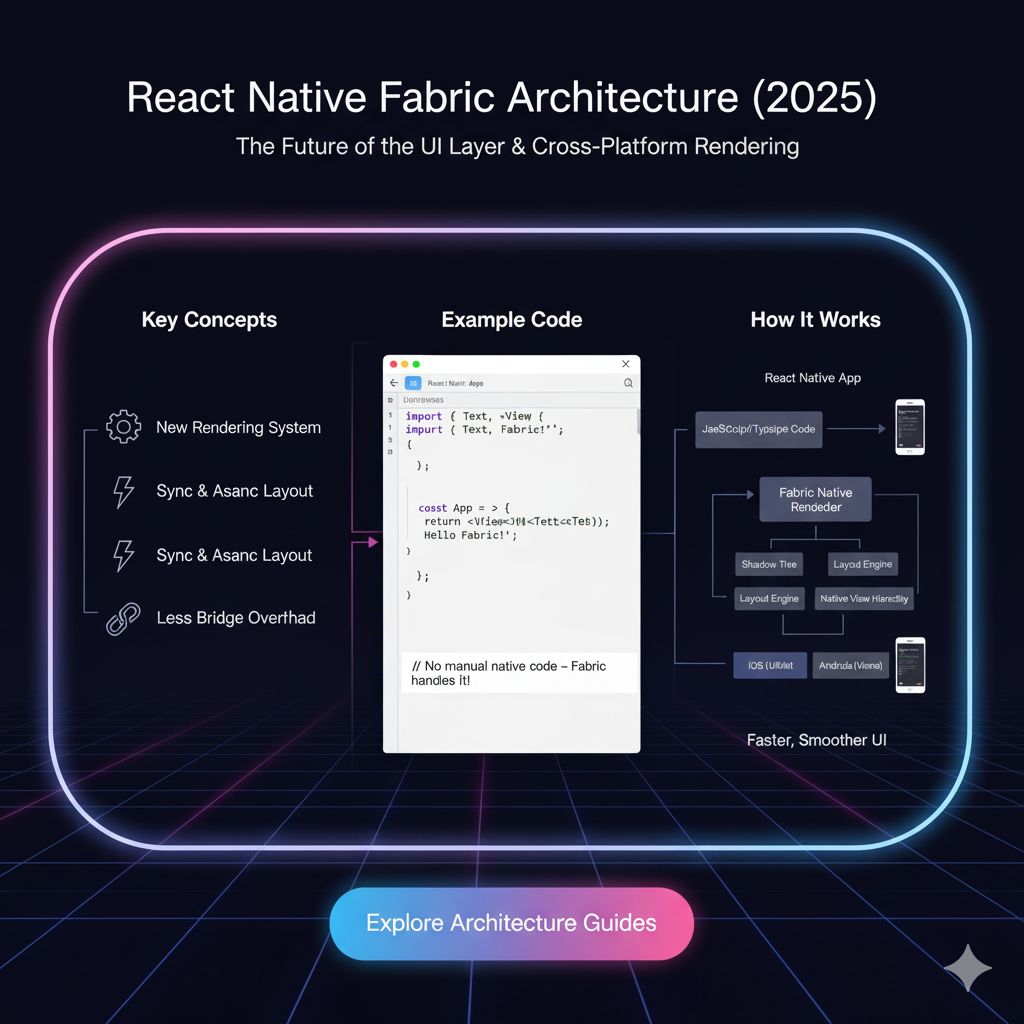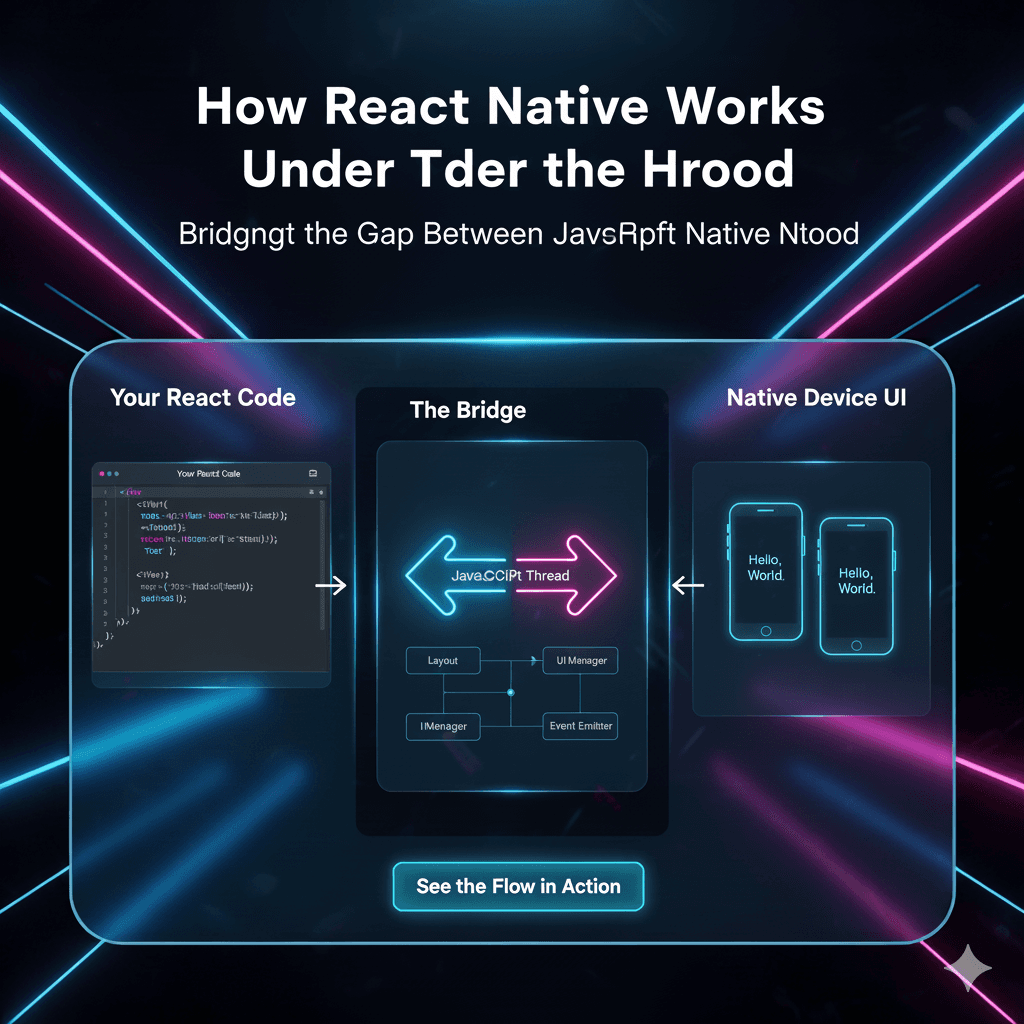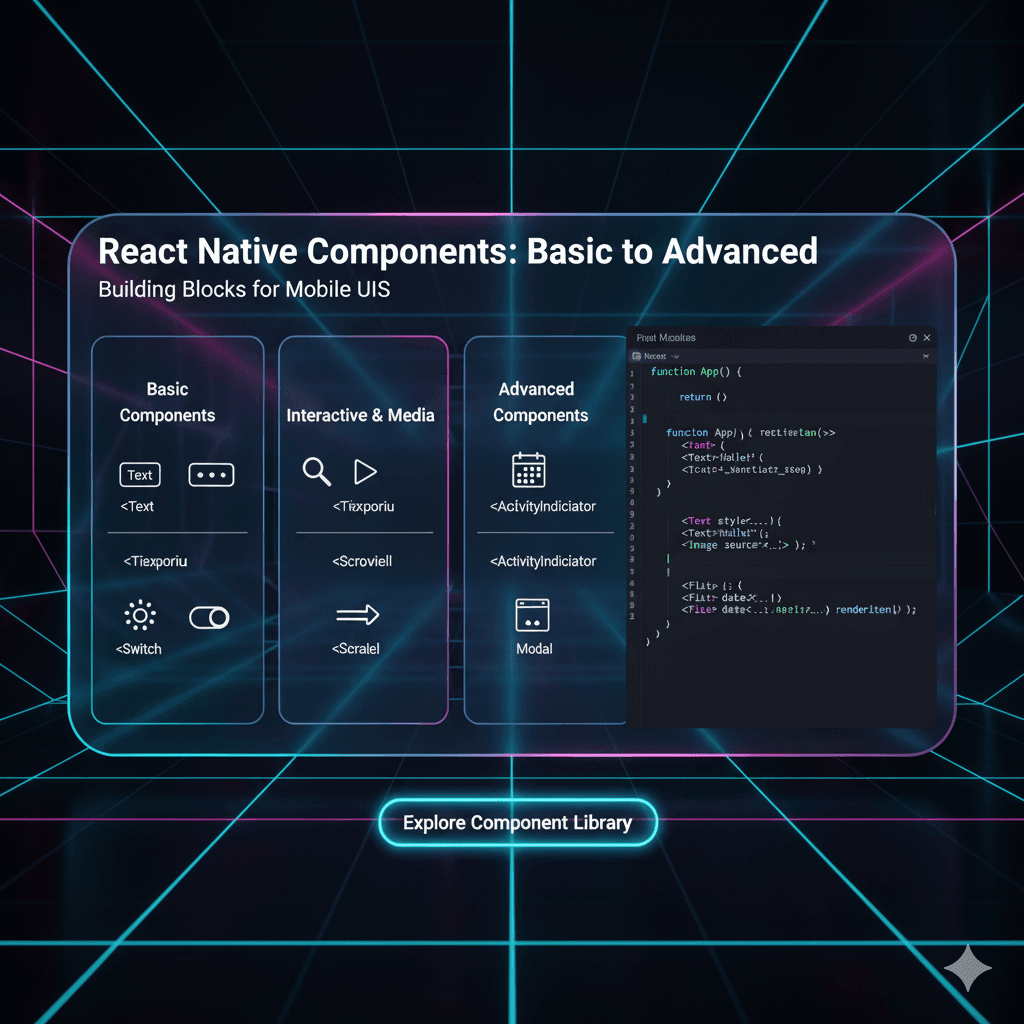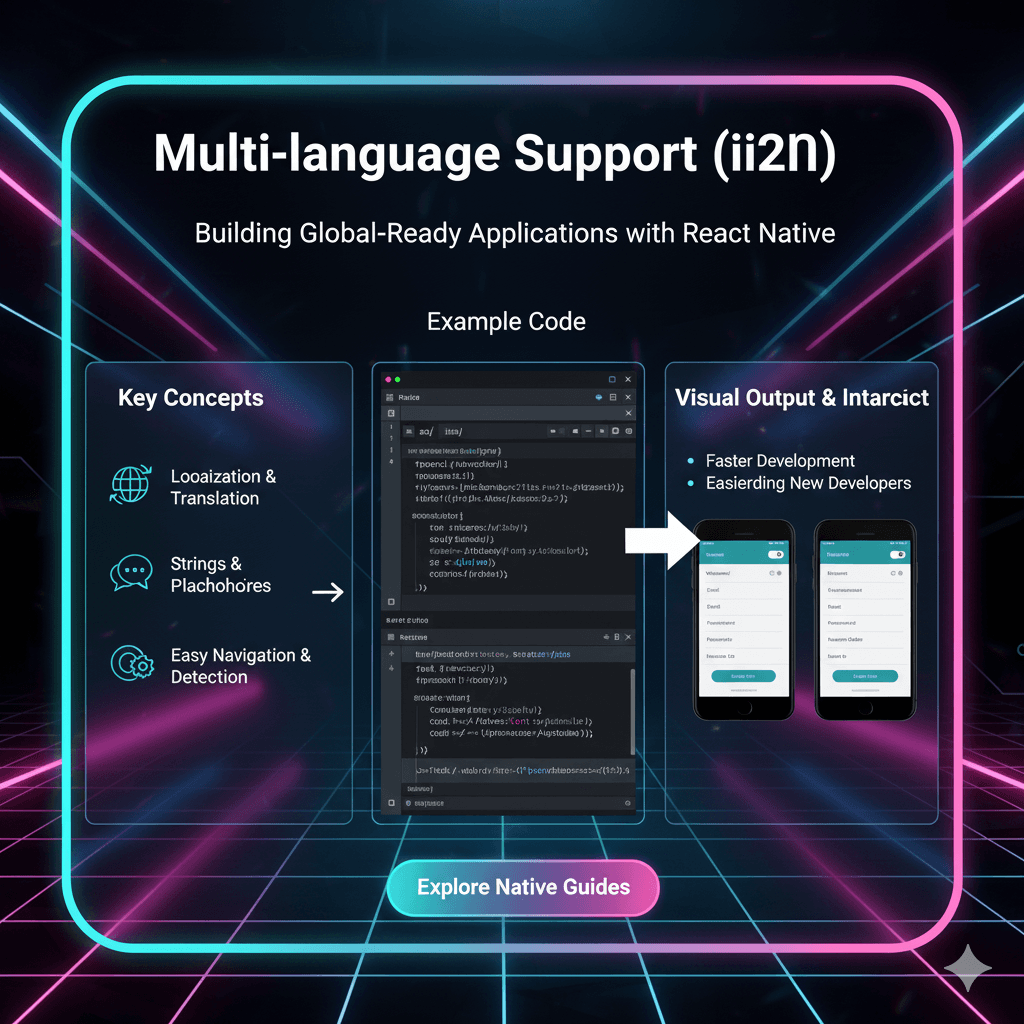React Native Fabric in 2025: A Deep Dive into the New Architecture

Is React Native's new Fabric Architecture a game-changer? Our 2025 guide breaks down the core concepts, benefits, and real-world impact. Plus, learn how to future-proof your skills with CoderCrafter.

React Native Fabric in 2025: A Deep Dive into the New Architecture
React Native Fabric in 2025: No More "It's Good, But..."
Let's be real for a second. For years, React Native has been that powerhouse framework we all have a love-hate relationship with. You love the "write once, run anywhere" dream. You love the hot-reload that makes you feel like a coding wizard. But then... you hit that wall.
The dreaded "bridge." The one that made your slick animations feel a bit janky. The one that made complex, thread-blocking operations a nightmare. The one that made you add a caveat to every "We're using React Native" announcement: "It's great, but... the performance can be a thing."
Well, folks, it's 2025, and that "but" is being systematically erased. Enter React Native's New Architecture, with its crown jewel: Fabric.
This isn't just a minor update; it's a foundational overhaul. It's React Native growing up and getting a performance tune-up from a supercar engineer. If you're a developer, a business owner, or just a tech enthusiast, understanding Fabric is key to understanding the future of cross-platform development.
So, grab your favorite drink, and let's peel back the layers.
First Off, What Even Was The Problem? The Old "Bridge"
To appreciate Fabric, we need to understand the bottleneck it replaced.
Imagine your React Native app as a conversation between two experts who speak different languages: your JavaScript world (your UI logic, components, state) and your Native world (iOS Swift/Objective-C & Android Java/Kotlin).
The old architecture used a "Bridge" to facilitate this conversation. Think of it as a slow, single-lane messenger service.
Your JS code says, "Hey, I need to render a
Viewwith a blue background."This message gets serialized into JSON (written down as a note).
The note is passed asynchronously across the Bridge to the Native side.
The Native side deserializes the note (reads it).
It then creates the actual native
UIVieworandroid.view.
This process happened in batches and was asynchronous. For most things, it was fine. But for things that need to be super fast and synchronous—like scrolling through a long list, super-smooth animations, or direct gesture handling—this "message passing" introduced lag. It was the ultimate "it gets stuck in traffic" problem.
Meet The New Crew: Fabric, JSI, and TurboModules
The new architecture is a trio of superheroes working in tandem to eliminate the bridge bottleneck.
1. JavaScript Interface (JSI) - The Universal Translator
JSI is the absolute bedrock of the new architecture. It's a lightweight, general-purpose API that allows JavaScript to hold a reference to, and directly invoke methods on, native C++ objects (and vice-versa).
The "Aha!" Moment: With the old Bridge, JS could only send a message. With JSI, JS can directly call a native function. No serialization. No waiting. It's like replacing a pen-pal relationship with a direct phone line.
This is possible because JSI isn't tied to a specific JavaScript engine. While the old bridge relied solely on JavaScriptCore (the engine behind Safari), JSI allows React Native to use other engines, like Google's V8, opening doors for even more performance optimizations.
2. Fabric - The New Rendering System
This is the star of the show. Fabric is the new name for the rendering system that leverages JSI.
Synchronous Execution: Because of JSI, UI commands can now be executed synchronously. When you click a button that triggers a state change and a re-render, the native side knows about it almost instantly. This eliminates the "flash of empty content" or "jank" during fast scrolling.
No More Serialization: Data doesn't need to be converted to JSON and back. JS and Native can talk directly, sharing memory and understanding complex objects.
Prioritization: Fabric introduces a concept of priorities for UI updates, ensuring that high-priority tasks (like a button press) aren't blocked by low-priority ones (like rendering an off-screen element).
3. TurboModules - The Supercharged Native Modules
Remember all those community libraries that let you access device features like the camera or Bluetooth? Those are Native Modules. In the old world, they were all loaded on app startup, slowing down the initial launch.
TurboModules fix this. They are lazy-loaded. A module is only loaded into memory when your JavaScript code actually needs it. This leads to significantly faster app startup times. And, thanks to JSI, they are also much faster to interact with once they are loaded.
Real-World Impact: What Does This Actually Feel Like?
Enough theory. What does this mean for you and your users?
Feeling "Native": The single biggest win is that well-built React Native apps now feel truly native. The 60 FPS (or even 120 FPS on high-refresh-rate screens) is not just a dream anymore. Swipes, scrolls, and transitions are buttery smooth.
Faster Time-To-Interaction (TTI): Your app feels like it loads quicker because it does. With TurboModules and more efficient rendering, the user can start interacting with the core functionality much faster.
Simplified Threading Model: The new architecture simplifies how threads work, reducing the chances of deadlocks and making the system more predictable and easier to debug.
A More Maintainable Codebase: For the React Native core team and the community, this is a huge win. The code is cleaner, more consistent, and paves the way for incredible new features in the coming years.
Best Practices for Developing with Fabric (2025 Edition)
If you're starting a new project today or migrating an old one, here's how to think:
Assume the New Architecture: All new React Native projects (v0.73+) use the new architecture by default. You're already on the right track.
Leverage
react-native-screens: This library is now more crucial than ever. It allows for true native navigation, which pairs perfectly with Fabric's synchronous rendering to make your navigation stacks feel 100% native.Be Mindful of Your Dependencies: Before adding a library, check if it's "New Arch Ready." Look for
"supportsFabric": truein itspackage.jsonor check its documentation. Using an old, incompatible library can force your app back into the old Bridge mode.Embrace Concurrent Features: The new architecture is designed to work hand-in-hand with React's concurrent features (like
useTransition). Learning these will allow you to build even more responsive apps that feel polished and professional.
FAQs: Your Burning Questions, Answered
Q: My app is on the old architecture. Do I need to rewrite everything?
A: Not at all! The migration is designed to be incremental. You can enable the new architecture and fix incompatibilities one by one. Many apps have successfully migrated. The React Native team provides excellent upgrade tools and guides.
Q: Does this mean React Native is now better than Flutter?
A: Ah, the age-old debate! Fabric brings React Native's performance much closer to Flutter's. The choice now comes down to ecosystem preference (JavaScript/TypeScript vs. Dart), team expertise, and specific project needs. It's a much more level playing field.
Q: Are all the popular libraries compatible yet?
A: In 2025, the vast majority of the critical ecosystem libraries are fully compatible. Always check the library's official docs or GitHub issues, but the community has largely caught up.
Q: Is it harder to develop for?
A: Initially, there was a learning curve, especially around the concepts of JSI and TurboModules for library creators. For the average app developer, however, it's mostly transparent. You just get a faster, smoother app. The complexity is abstracted away, which is the whole point!
Conclusion: The Future is Fabric, and It's Smooth
The React Native Fabric architecture isn't just an incremental update; it's a statement of intent. It proves that the framework is here to stay and is committed to solving its core weaknesses. The "it's good, but..." excuses are rapidly vanishing.
We're now in an era where you can build a truly world-class, high-performance mobile application using the web skills you already possess. The line between "native" and "cross-platform" is blurrier than ever, and that's a win for developers and users alike.
The tech landscape moves fast, and staying ahead of the curve is what separates good developers from great ones. Understanding foundational shifts like Fabric is crucial. To learn professional software development courses that dive deep into modern technologies like React Native, Python Programming, Full Stack Development, and the MERN Stack, visit and enroll today at codercrafter.in. Our curriculum is designed to give you the industry-relevant skills you need to build the future.









